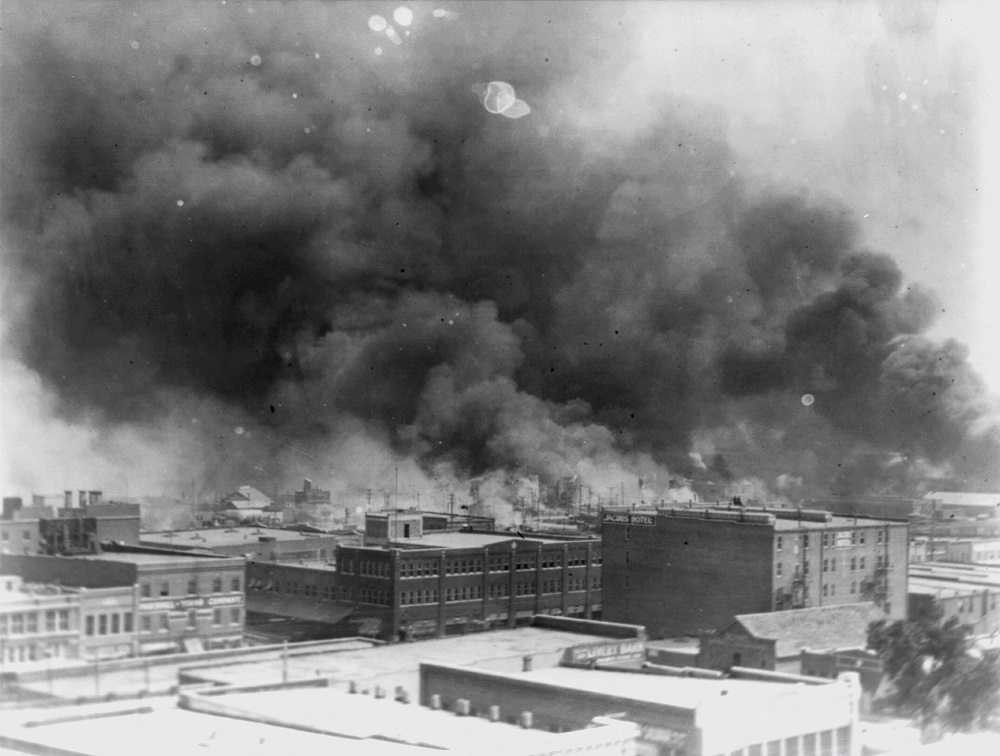Viola Fletcher, the oldest living survivor of the 1921 Tulsa Massacre, testified before a House Judiciary Committee, sharing first hand accounts of the horror of the attacks against Black residents of the Greenwood section of Tulsa.
The committee is exploring legal and policy measures may be enacted to compensate survivors and their descendants. The district was dubbed “Black Wall Street” because of a thriving local economy entirely created and run by Black Tulsans.
Violence flared from May 31 through June 1, 1921, killing dozens of residents, destroyed Black businesses, and left 10,000 Black people homeless.
Click ▶️ to listen to Ebony McMorris’s AURN News report:

FILE – In this June 15, 2020 file photo, Freeman Culver stands in front of a mural listing the names of businesses destroyed during the 1921 Tulsa Race Massacre in Tulsa, Okla. Attorneys for victims and their descendants affected by the 1921 massacre filed a lawsuit in state court on Tuesday, Sept. 1, 2020, against the City of Tulsa and other defendants seeking reparations for the destruction of the city’s once thriving Black district. (AP Photo/Sue Ogrocki File)




